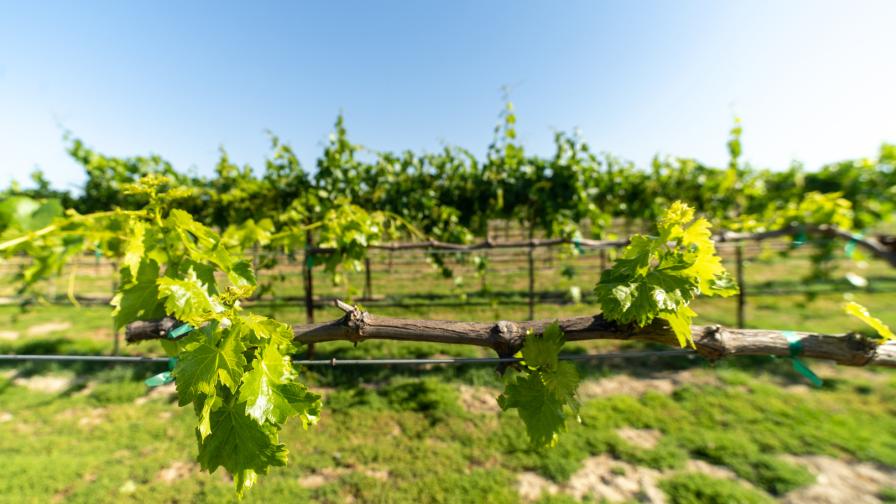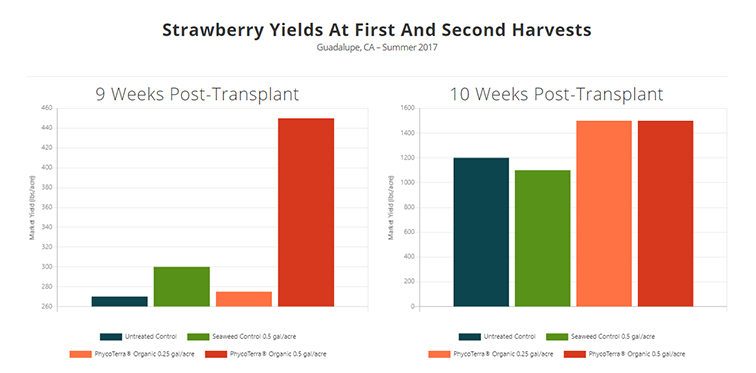How to Dodge Delayed Spring Growth in Grapes

Certain rootstocks are particularly prone to delayed spring growth. Sunpreme raisin grapes on Freedom rootstock (foreground) compared to own-rooted Sunpreme (background).
Photo by Matthew Fidelibus
Extension faculty at the University of California received many calls last spring from grape growers concerned about vineyards with delayed and erratic budbreak and stunted shoots. In fact, there was so much interest in this topic that the Department of Viticulture and Enology at the University of California, Davis hosted a virtual meeting to address growers’ concerns. The meeting was recorded and can be viewed here.
As discussed in the meeting, stunted shoots in California vineyards often result from winter cold injury or a growth disorder known as delayed spring growth (DSG). Clusters on severely stunted shoots may be aborted. In other cases, the clusters remain and sometimes appear to grow at the expense of the shoots to which they are attached. However, clusters on affected shoots will generally be smaller than normal and have berries of irregular sizes. Therefore, cold injury and DSG may directly reduce yield and quality.
Winter cold injury is most severe when freezing temperatures are preceded by warm days. California experienced this damaging scenario last fall when warmer-than-normal temperatures in October were followed by a freeze in early November. Young vines and vines that are cane-pruned are particularly prone to this type of cold injury.
In the Central and San Joaquin Valley where I am located, minimum temperatures last winter barely dipped below 30°F, which may not be low enough to cause cold damage. Spring growth disorders here were thus attributed to DSG, although it can sometimes be difficult to distinguish between cold injury and DSG.
Vines affected by cold injury or DSG have similar symptoms, and certain conditions can predispose a vineyard to either disorder. In California, both issues most commonly affect young (less than 3 years old) vines, especially vines that were cane-pruned. Overcropping, late harvest, and excessive late-season growth also increase the likelihood of cold damage and DSG.
Certain rootstocks, such as ‘Freedom’ and ‘Harmony’, and scion varieties such as ‘Chardonnay’ and ‘Cabernet Sauvignon’, are also more prone to cold damage or DSG. And environmental factors such as warm fall temperatures and a lack of precipitation in late fall or early winter also increase the risk.
HEALTHY CARBS
Acclimation helps reduce the risk for vine injury. In particular, an ample supply of non-structural carbohydrates (sugars and starch) helps protect vines from freezing and provides the “fuel” the vines need to overwinter and grow out in the spring. Vines typically deplete stored carbohydrate reserves by spring, so it is important to replenish them over the remaining growing season. If carbohydrates are lacking, as might occur in young vines, especially if they are actively growing late in the season, harvested late, or have been overcropped, they will be more likely to suffer cold injury or delayed spring growth. To help optimize carbohydrate reserves and acclimate the vines to cold, it is recommended that late-season irrigation is sufficient to maintain the vine’s canopy without stimulating significant growth.
In late fall and early winter, growers should assess soil moisture, review the weather forecast, and consider whether winter irrigation may be needed. If the soil is dry, no significant precipitation has occurred and none is in the forecast, then irrigation is recommended. Vines use much less water over the dormant season than during the growing season, but excessively dry soils in winter can cause DSG. Dormant buds become dehydrated over winter and have relatively weak vascular connections to the rest of the vine. Spring sap flow (bleeding) helps resolve any vascular embolisms that may have formed over the winter and helps rehydrate the buds. Bleeding results from root pressure that develops after carbohydrates and other organic compounds are deposited in the xylem, increasing osmotic pressure and water uptake from the soil. Insufficient carbohydrate reserves and soil moisture could impair this process.
Vines may be affected by cold injury or DSG to varying degrees. Mild to moderate symptoms can be outgrown without lasting consequences. However, vines with more severe symptoms may benefit from intervention. Removing clusters of fruit from severely stunted shoots can help prevent a vine from becoming overcropped, which could predispose the vine to another round of cold injury or DSG. Buds and shoots on severely affected vines may die and require pruning and retraining. In the worst-case scenario, vines may need to
be replaced.










